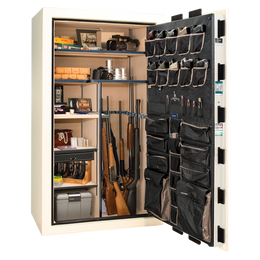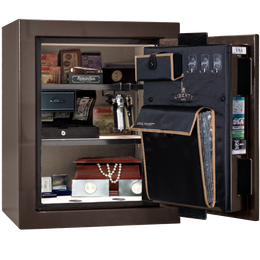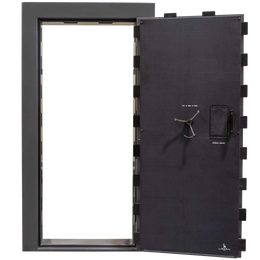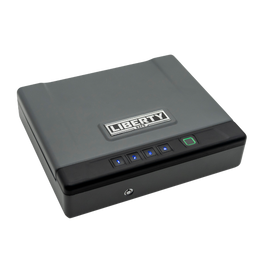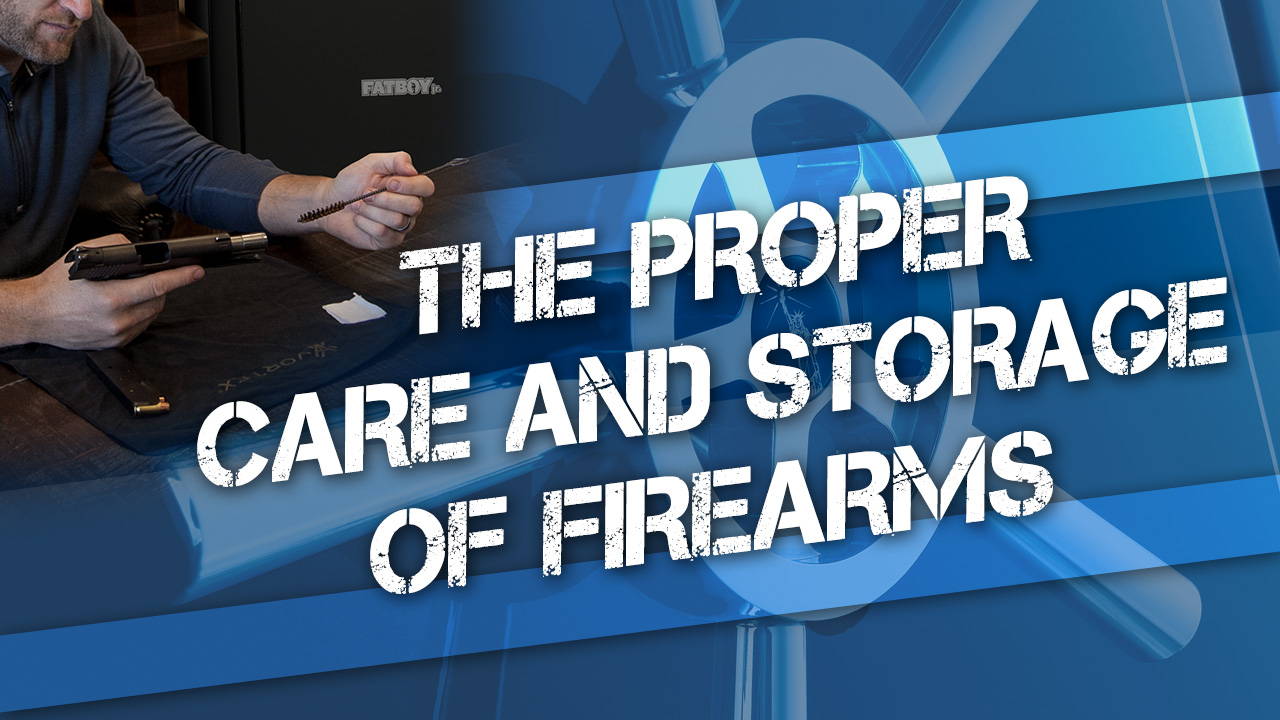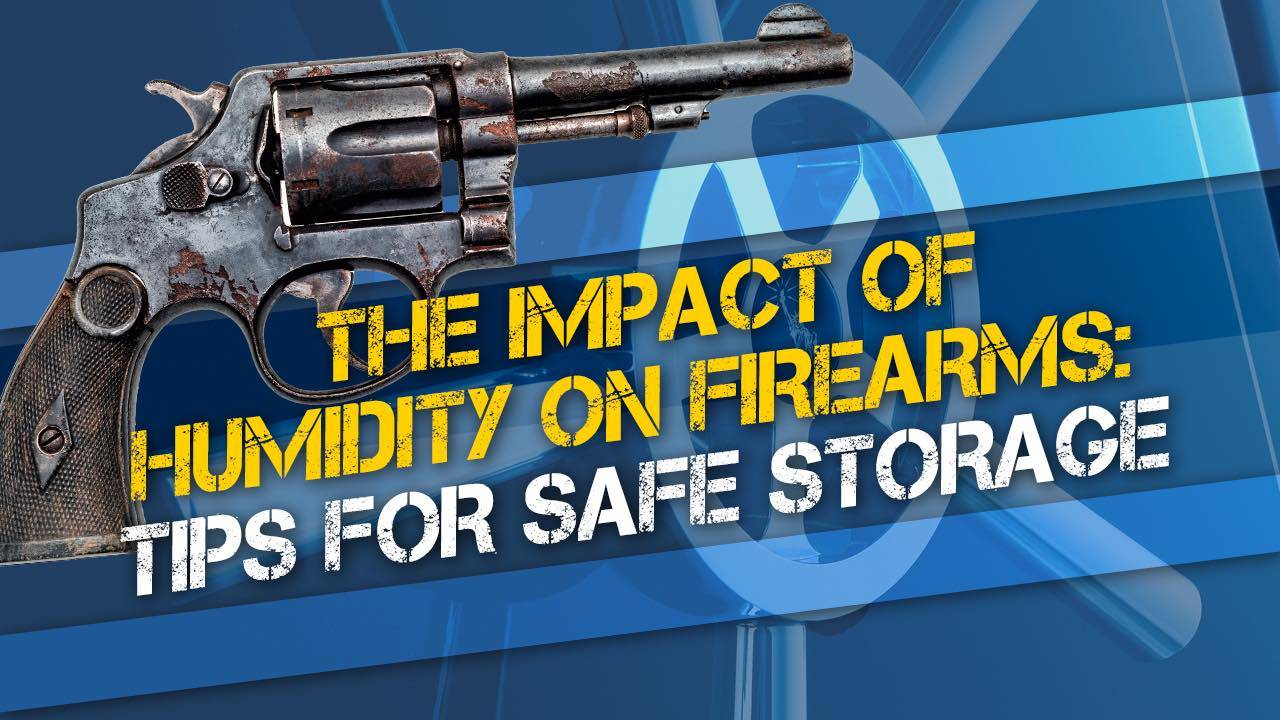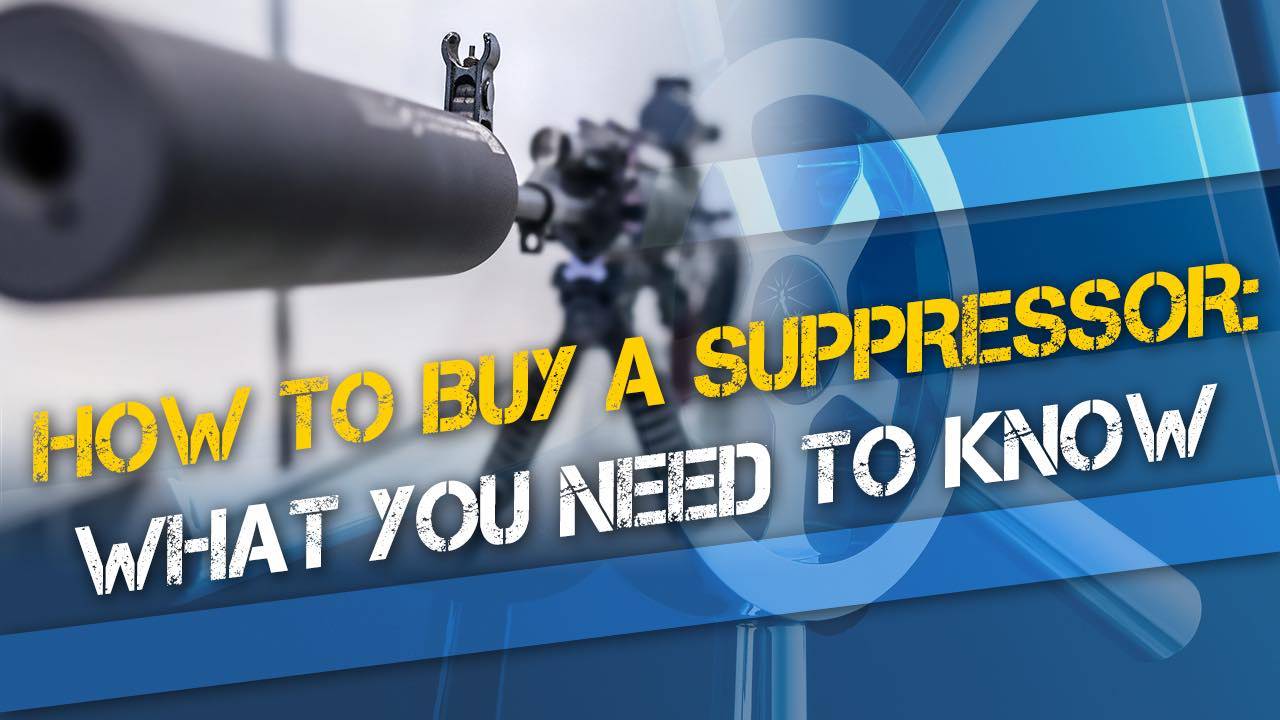Whatever your reason for owning firearms, be it for hunting, recreational shooting, collecting, historical interest, competition, self-protection, or other reasons, it’s important to understand the proper care and storage of firearms. Guns can be very expensive, and in some cases your life may depend on their proper function, so keeping your firearms properly maintained and protected from the elements (as well as from unauthorized use) is vital.
This can be a sweeping topic that generates a lot of strong opinions among firearms enthusiasts, but we’re going to discuss our recommended practices for keeping your guns protected from corrosion and excessive wear during use and storage, and secure from unauthorized access, theft, and fire.
Table of Contents
- How to care for your firearms during and after use.
- Best practices for the proper and secure storage of firearms.
- Too much gun safe humidity damages firearms in storage: the best dehumidifier for gun safes.
- Should you store rifles and shotguns muzzle up, or muzzle down? And what about gun socks?
- Additional tips for maximizing space in your gun safe.
How to care for your firearms during and after use
Like all mechanical devices, firearms require regular lubrication, cleaning, and maintenance. The more they’re fired, the more they need to be maintained, but even guns sitting unused in your safe should be examined regularly for signs of trouble. Oils and other preservatives can evaporate, oxidize, or gum up, wood stocks can dry out and crack, mold can start to form, and rust or other corrosion can take hold or progress.
Protecting the external finish of firearms
For “working guns” it’s important to keep them clean (or clean enough) and lubricated for proper, reliable function, and depending on the materials they’re made of and the environment they’re used in, the external finish may need some extra attention as well, in addition to the usual cleaning and lubrication regimen.
For example, waterfowl hunters, particularly those hunting on or near salty or brackish water, might apply a thin layer of marine grease, white lithium grease, RIG (rust inhibiting grease), or a similar compound to the metal parts of their guns before each hunt to both help shed water and protect the metal from corrosion.
Any gun that has been rained or snowed on, dragged through dew-covered brush, become damp with condensation, or (heaven forbid) immersed in water should be thoroughly disassembled, dried, cleaned, lubricated, and its metal surfaces treated with rust preventative as soon as possible after contact with water.
Many people find wiping guns with a soft rag dampened with any good-quality oil to be sufficient for preventing external oxidation, but others prefer dedicated rust-preventers like Eezox, Corrosion-X, or WD-40 Specialist Corrosion Inhibitor (NOT regular WD-40). Be sure to read and follow all directions when using these formulations, as some are potentially harmful to the lungs or skin. Also be sure to test them before applying to plastic or wood finishes, which may be damaged by some chemicals.
For long-term storage, particularly for “heirloom” firearms, a good coating of Renaissance Wax or Flitz Rifle, Gun, & Knife Wax can prevent rust as well as help protect against marks from fingerprints. A coat of quality wax also helps prevent wood stocks from drying out and cracking.
Firearms with synthetic stocks and stainless finishes will have an advantage in harsh field conditions, but you can still enjoy shooting or hunting with classic blued-steel-and-walnut firearms if you take the proper precautions and adhere to appropriate maintenance regimens during and after your outdoor activities.
Condensation concerns
Some experts recommend that guns that are brought into a warm space after being outside in the cold should be left in their gun cases until they gradually come up to room temperature. An uncased, cold gun will often collect condensation, which can accelerate rust.
However, other experts point out that padded gun rugs or soft gun cases can trap moisture and accelerate rust, and advise that firearms be removed from their soft cases immediately, even if the guns are cold and are being brought into a warm room or vehicle.
Regardless of which school of thought you adhere to, the key point is to check any guns that have been outside in the cold, examining them carefully for signs of moisture, and after they have come up to room temp, wipe any condensation off with a soft, dry cloth (be sure to check below the stock line), and apply your choice of rust preventative before storage or heading out on your next hunt.
Once you’re home from your hunt or other outdoor activity, take the time to field strip, carefully examine, and clean your gun (particularly if it’s been fired), and reapply the rust-preventative of your choice before storage.
Should you clean your guns after each use?
Like the “which gun oil is best?” question, this one is both controversial and dependent on personal preference and priorities. Many shooters with military training adhere to the “clean to white-glove inspection standards after each firing” school of thought, while others who shoot more guns more often might opt to keep the external surfaces wiped free of fouling and fingerprints, the internals lubed, and only do a detailed cleaning after a few hundred rounds or more.
It’s a fact that modern firearms shooting modern, non-corrosive ammunition can go hundreds and often thousands of rounds between cleanings and still remain perfectly functional, as long as they are properly lubricated. Some shooters choose to follow this practice, while others deem it irresponsible gun abuse.
Benchrest or F-class rifle shooters seeking the ultimate in accuracy often clean their barrels after each use, and use specialized copper removers to banish all traces of copper fouling so they have a known baseline for consistency.
Other shooters swear they see no benefit to cleaning their bores and send nothing through them but bullets, replacing barrels as needed when they become worn by throat erosion or wear to the rifling.
Removing a rifle’s action from a bedded or tightly fitted stock (M1 Garand, M14 pattern, etc.) should be done very occasionally. Many competitive shooters only remove their barreled actions from their stocks once a year for inspection, routine maintenance, and cleaning below the stockline, since separating the action from the stock inevitably introduces some wear and potential for inconsistent accuracy.
Whether you adhere to the “clean your gun every time you shoot it” maxim, or the “just keep it lubed, shoot it, and clean it once in a while” school of thought, we can all agree that for maximum firearm life and proper function, sliding or pivoting components should be kept lubricated, metal surfaces should be wiped free from fingerprints and other contaminants after handling or use, and some type of corrosion preventative applied.
Should you use bore cleaning brushes or just patches and jags?
This is another area of great controversy among shooters. Some swear that a bronze cleaning brush can not possibly harm a steel barrel. Others feel that any abrasion is to be avoided (after all, copper-jacketed and lead bullets eventually wear rifling down), and only use patches, solvents, and oils to clean and preserve their bores.
Regardless, in some cases (shooting non-jacketed lead bullets, for example, or when cleaning heavily fouled or Cosmoline-crusted barrels) a bore brush may be useful. Everyone agrees that ideally you should clean from the breech, rather than from the muzzle (where possible), and should use high-quality, coated cleaning rods combined with bore/muzzle guides to prevent abrasion to the barrel’s throat, rifling, or crown.
Many collectors of military firearms have seen the damage to muzzle rifling caused by overzealous troops using sectioned, steel cleaning rods too often or too enthusiastically.
A note on corrosive ammunition, black powder, and percussion caps
We said above that modern firearms shooting modern ammunition can go many thousands of rounds between cleanings without serious damage. However, if you are shooting corrosive ammunition, or shooting black-powder firearms, it’s vital that you accept a proper cleaning regimen as part of each outing.
The corrosive salts that result from igniting the priming compounds used in older or "com-bloc" ammunition or percussion caps, as well as the hygroscopic (water-attracting) fouling that results when black powder (and many substitutes) is burned, can cause serious damage to the metal parts of your firearms in a matter of hours if conditions are right.
Ideally these guns should be thoroughly cleaned the same day they are used, and it’s important to go one extra step before the usual cleaning with gun solvents and oils. Ammonia and other toxic chemicals were used for decades to neutralize the corrosive salts, but today most people simply use plain or soapy water, a window cleaner like Windex, or "moose milk" (a combination of Ballistol and water) to wash out the chamber, bore, gas tube/cylinder, breech face, and anywhere else this corrosive fouling is deposited, before thoroughly drying and then cleaning as you would a firearm under normal use.
Best practices for the proper and secure storage of firearms
When discussing the proper storage of firearms, it’s necessary to distinguish between the steps you should take to: 1. prevent corrosion, mold, or other environmental damage to your firearms during storage; and 2. protect your firearms from fire, theft, or unauthorized access. A good gun safe or vault door can help with both aspects of proper firearm storage.
Gun safes, handgun safes, vault doors
At Liberty Safe, we are passionate about building the best gun safes you can buy, made in the USA from US steel. But we stress the importance of getting a good safe to secure your firearms, even if you choose another manufacturer.
Storing your valuable guns in a closet is a bad idea for several reasons. It doesn’t prevent theft or unauthorized access, it doesn’t help prevent fire damage, and it’s generally not a humidity-controlled space.
Never store guns long-term in padded gun cases, because, as we mentioned earlier, the padding can absorb and retain moisture and contribute to rust. Soft gun cases should only be used for transporting firearms to and from a hunt or shooting activity.
A good gun safe will help deter thieves as well as provide effective protection from fire. Generally, the more you pay, the better the security features and fire protection, but note that a large, top-rated gun safe will be quite heavy, so be sure your floors are rated to take the load.
Liberty safes have been fire tested based on guidelines developed by the US Department of Commerce National Institute of Standards and Technology (NIST) regarding what actually happens in a house fire. Our gun safes, featuring Palusol expanding door seals, are shown to withstand up to 2.5 hours at a sustained 1200 degrees Fahrenheit.
For gun owners with just one or two handguns and small living spaces, a handgun vault can make sense. These convenient “pistol safes” allow secure storage while allowing rapid access to the owner and can be bolted to a variety of surfaces for security and convenience. They don’t provide the additional security and fire protection of a true gun safe, but they are much better than leaving your handgun unsecured in a drawer or closet.
A vault door can be a great option when constructing a new house, or you can even convert a room in your existing home to a secure vault with lots of space for firearms and valuables. Ideally, you’ll want to utilize hardened, reinforced concrete walls as well as a humidity-control system (see below).
Trigger locks and cable locks
We don’t recommend using trigger locks or cable gun locks as an effective method to prevent theft or unauthorized use and would advise handgun gun owners to invest in a quality handgun vault (or ideally, a fire-rated gun safe).
However, we understand that some jurisdictions require the use of these security devices, and in some cases, a trigger or cable lock may be all the user can afford, in which case it’s certainly better than nothing.
Choose a well-rated lock from a reputable manufacturer, and never attempt to lock a loaded firearm.
Too much gun safe humidity damages firearms in storage: the best dehumidifier for gun safes
For optimal long-term storage conditions to prevent corrosion and other damage, the NRA recommends keeping the humidity in your vault room or gun safe between 30% and 50% and the temperature around 70 degrees F. We’d err on the side closer to 30% humidity if possible, as excess water in the air in enclosed spaces can accelerate corrosion and mold growth.
Suppose the relative humidity in your area is often greater than 50% (as it is in most high-population areas of the US). In that case, you’ll definitely want to invest in a safe dehumidifier if your home’s interior space isn’t humidity-controlled. Several options include plug-in "rod" types, air-circulating, and simple desiccant (moisture-absorbing) designs. Let’s go over the primary advantages of the different types.
Canister or chemical desiccant dehumidifiers (and, can you use Damprid in a gun safe?)
There are two main types of chemical or mineral-based moisture-absorbing materials in common usage: Calcium chloride crystals and silica gel bead desiccants. Products like Damp-rid employ calcium chloride crystals to absorb moisture from the air. They can be effective in helping to dry out closets, cupboards, or other enclosed spaces or other areas after a flood or in high-humidity areas. Calcium chloride desiccants can be fairly effective in specific uses. Still, you need to replace the crystals regularly because the crystals absorb water, become saturated, and eventually dissolve into a liquid “brine.” This corrosive brine must then be disposed of and replaced. Since this dehumidifying method results in potentially messy containers filled with corrosive liquid, few experts recommend this humidity control for long-term use around guns.
On the other hand, silica-gel-based dehumidifiers or desiccant canisters can be effective and appropriate for use inside a humid gun safe. These devices often come in a perforated canister style or may be found in a “cordless” plug-in “rechargeable” style like the EVA-DRY dehumidifier. The enclosed silica gel beads absorb moisture from the air without needing electricity, so if you don’t have access to a power outlet or don’t want to run electricity to your gun safe, the silica-gel type of desiccant can be ideal. The EVA-DRY type includes a visual color indicator letting you know when the silica beads are saturated and need to be “recharged” or refreshed, which means the device is removed from your safe and plugged into an outlet for a few hours to heat the silica beads and drive the absorbed moisture out (a canister type can be placed in a low oven to remove excess moisture as well). Then the dehumidifier or canister can be returned to the safe (Note: Never leave this type of desiccant dehumidifier plugged in all the time. The electric plug is only to be used to “refresh” the beads when they become saturated.)
One potential downside of this type is that they only work for so long before they must be renewed or refreshed by heating the beads and driving out excess moisture. So if you don’t have access or desire to check on your safe’s condition fairly frequently, this type won’t likely be the best safe dehumidifier choice for you.
Electric rod-type or air-circulating gun safe dehumidifiers
Plug-in/electric safe dehumidifiers like the Dry Rod Dehumidifier and the PEET Air Circulating Dehumidifier work by heating an element electrically and keeping it at a constant, safe temperature, which creates warm, dry air circulation inside your safe and drives humid air out. For most instances, this is the type of in-safe dehumidifier we recommend, mainly if you already have run electrical power to your safe for lighting or other uses.
These types of safe dehumidifiers circulate slightly warmer air throughout your safe’s interior, which drives humid air out. As a result, the temperature of the metal parts in firearms is increased slightly (about 3 degrees), which is just enough to eliminate the tendency of cold metal to condense moisture out of damp air. Wood parts are maintained at a temperature that discourages moisture from building up in metal-to-wood contact areas, where they are the most vulnerable to rust and corrosion.
A potential downside of this type of safe dehumidifier is that they require a reliable supply of electricity to function (the cost is literally pennies per day), so if your safe is in a remote location with irregular electrical power or you don’t have provision for an electrical outlet near your desired safe location, a desiccant-type dehumidifier might be better for you.
Be sure to check the function of your dehumidifying system regularly and replace any desiccant packs or containers when they reach capacity. This also allows you to periodically examine your firearms for signs of rust, which you should be doing anyway.
Remember, a properly made gun safe will allow air to circulate within (and this is desirable for optimal firearm and document storage, as any archivist or firearm historian will tell you). This means that even if you store your firearms in a gun safe, humidity can seep inside if you don’t use an in-safe dehumidifier that will help dry and circulate and drive humid air out.
How do you know how humid it is inside your gun safe?
You don’t unless you use a hygrometer (a humidity and temperature monitor) inside your safe or vault to inform you about the moisture content in the air. This inexpensive device is a must if you want to keep your guns in the proper storage environment to prevent corrosion and mold. The humidity and temperature monitor will tell you the conditions inside your gun safe or vault, so you can make adjustments if necessary.
Should you store rifles and shotguns muzzle up, or muzzle down? And what about gun socks?
Guns stored in very dry climates can also be damaged. Air that’s dryer than 20% humidity can dry out expensive wood gun stocks, causing shrinkage, cracking, and damage to the finish, though the application of a good preservative wax (discussed above) can help mitigate this.
When storing a lot of wood-stocked firearms in your safe where your air is far too dry, placing a damp sponge in a waterproof bowl or another container in your safe can be a quick and easy way to add some humidity to your safe’s interior if you live in a truly arid locale. Be sure to monitor your safe’s humidity level and check the sponge regularly for any mold, replacing it as needed.
And yes, your gun safe also requires maintenance. We recommend having a professional examine and service the locking mechanism and hinges of your safe at least once a year.
Muzzle up, or muzzle down? And what about gun socks?
Some people think it silly to even consider storing a rifle or shotgun resting on its muzzle, rather than on its buttplate. Others store all of their long guns muzzle-down. There are two primary reasons for doing this: to prevent oil contamination of expensive actions and buttsstocks, and to free up space inside a crowded safe.
Many collectors of steel-and-wood firearms have been dismayed to find expensive walnut or maple buttstocks soaked and sometimes ruined by excess oil that has run down from the bore and action when the firearm is stored with its muzzle up. What’s more, oil can harden and gum up over time, and the internal mechanisms and firing pin channels of guns stored in this way can become non-functional until detail-stripped and cleaned.
Storing a long gun muzzle down helps keep excess oil out of the action, and away from the stock. The most logical solution to the oil-soaking problem is to avoid over-oiling your firearms in the first place, and using dry-film corrosion protectants that won’t wick into your actions and stocks.
There are some other advantages to muzzle-down storage, however. Storing half of your long guns muzzle-down can free up a lot of space inside a crowded safe, particularly if each firearm is placed inside a dedicated moisture-wicking “gun sock” (often impregnated with silicone to help mitigate corrosion). Keeping your firearms in gun socks also helps prevent handling dings and scratches when moving guns around your safe or storing them leaned up against each other.
Additionally, muzzle-down storage keeps soft rubber/foam/leather buttpads from compressing over time, helping to maintain their effectiveness and preventing deformation. Just be sure the muzzle is resting on a carpeted surface or a soft rag, to prevent potential damage to the muzzle and crown, and that the firearm is secure from tipping or sliding.
Additional tips for maximizing space in your gun safe
Rifle Rods and handgun hangers can be hugely valuable in maximizing gun storage in a crowded safe. The 16” long, bore-safe Rifle Rods insert into the barrels of rifles or shotguns and have a section of velcro at the top (and the kit comes with the appropriate sheet of adhesive velcro to place under any non-carpeted shelving) allowing varying heights of guns to be organized in your safe, even if there’s not an available safe wall or firearm rest to lean the gun against.
Handgun hangers insert into the barrel of pistols and revolvers and can either hang below a safe’s shelf or hold them vertically above the shelf (or both, depending on the model of the hanger). This can free up a lot of shelf space for more handguns or other valuables. For more information, tools, and tips, please refer to our article on how to organize and maintain your gun safe.
Of course, our recommendation, once you’ve maximized the available space in your gun safe and still find yourself in need of more, is to buy another, larger gun safe. Liberty offers a wide variety of models and sizes, so you’re sure to find one that meets your requirements of security, fire protection, and capacity, at a price you can afford.
*Made in the U.S.A. from U.S. and Global Parts.


